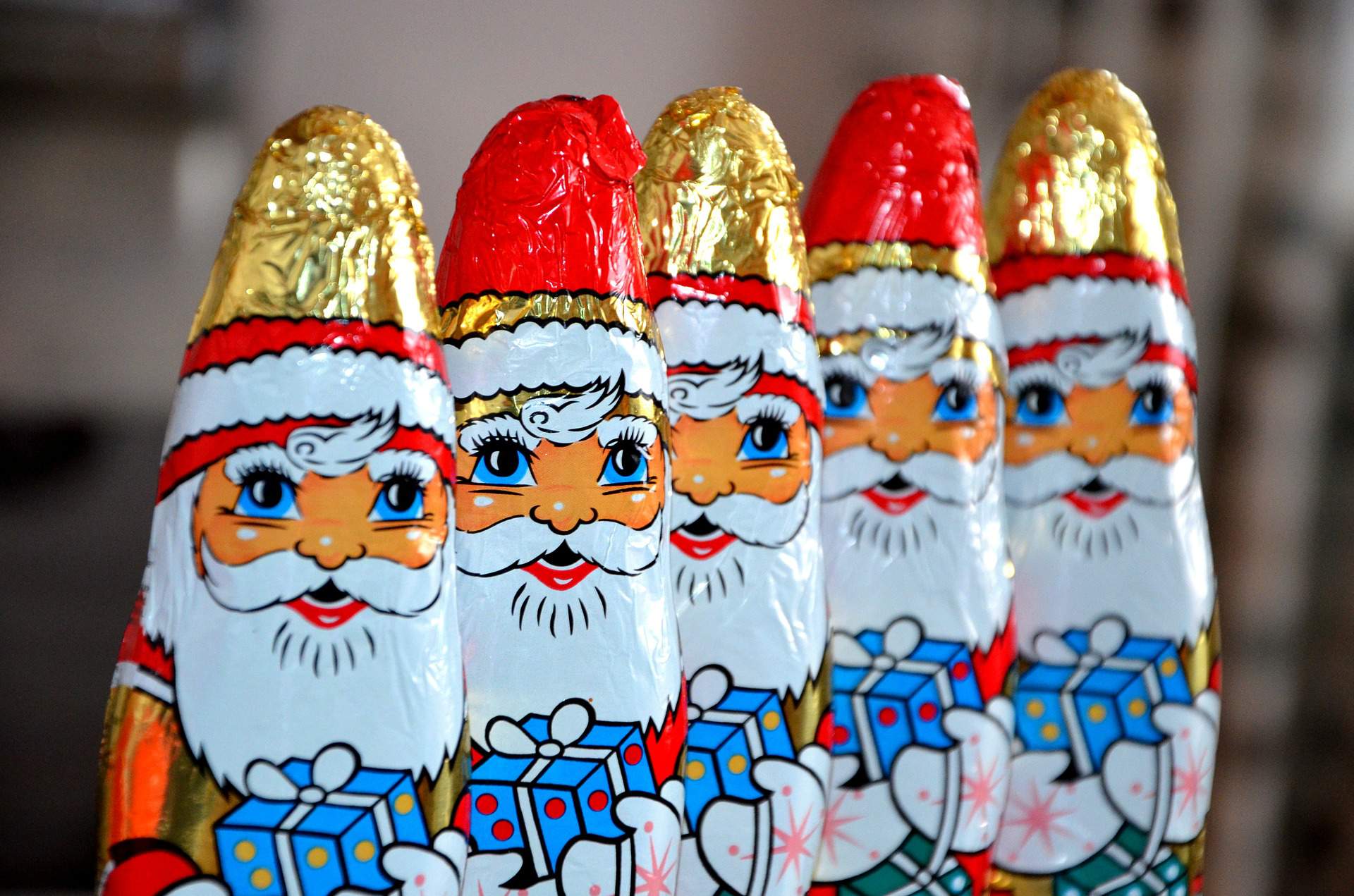Hungarian Christmas chocolate overview

Santa Claus (Mikulás) figures made of chocolate are cheaper now, Hungarians eat about 8 million of them. Wrapped candy is less popular, still Hungarians spend 6 billion HUF on it. Hvg.hu’s small chocolate overview, with big numbers.
Domestic confectionery market distribution approaches 180 billion HUF per year. Biscuits, chocolate bars and tablets of chocolate make up the biggest part with over 25 billion HUF each, waffles, chips, desserts and candies reach a turnover of about 20 billion HUF separately.
Sándor Sánta, president of the Association of Hungarian Confectionery Manufacturers, told MTI that this year’s sales will exceed that of last year’s with a few per cents, regarding both quantity and value. Last year, 400 tons of chocolate Santa Claus figures were sold during the holidays.
Three-fourth of the people buy chocolate figures for St. Nicholas’s day (6th of December), 5 pieces on average.
Figures of medium size are the most sought for, and the largest ones sell the worst. The most important aspect when shopping is that the product is made of real chocolate, the second is flavouring, the third is price, the importance of the rest – size, brand, wrapping – is rather balanced.
According to the data, the income in the scrutinised five years (until 2015) grew by 30%, the income from export was 53%, the latter is primarily the result of companies being a hundred per cent foreign property. The number of enterprises in the confectionery industry increased by more than 20% due to the growth of the number of micro-enterprises by 2015. In 2011, the sector recorded 147 such enterprises, in 2015 their number exceeded 200. At the same time, the number of employees increased by more than 17%, due to medium and large companies.
Sándor Sánta highlighted that Hungarian and foreign manufacturers can be separated in only a few cases, since there are many international companies that have a factory in Hungary, where they produce confectionery from Hungarian materials, with Hungarian workforce, and, in many cases, re-emerging old Hungarian brands.
According to the president, in the last couple of years due to EU funds, Hungarian small and medium-sized enterprises have also been able to invest, modernise their production, and build new production halls in the recent years.
Consumer research conducted by the association also revealed that 93% of Hungarian households buy wrapped candy, but the quantity shows a slightly decreasing tendency. According to their estimate, the annual turnover is 3500-4000 tons, worth about 6 billion HUF. The average price of Santa Claus and other figured seasonal sweets slightly decreased last year, compared to the years before that, the price per kg of wrapped candy was between 2500 and 6000 HUF, chocolate Santa Claus figures were between a couple of hundred and 1.5 thousand HUF. Compared to last year, the price of seasonal chocolate figures has reduced slightly.
According to Nielsen’s survey, last year Hungarians spent more than 3 billion HUF on seasonal sweets, a total of 616 tons and nearly 11 million items. Seasonal sweets accounted for 64%, 66% of which was made up by chocolate Santas, of which more than 400 tons and 8 million pieces were sold last year between October and December. Santa Claus figures sold 6% less last year, than in the season of 2015, but 77 out of 100 seasonal sweets sold was a Santa figure.
The survey also shows that among Christmas sweets, the segment of other chocolate figures have the second largest proportionate value, their market share jumped from 10% to 12%. The market share of traditional gift packages gave one-tenth of the season of Christmas sweets in value, which is a small increase in 2016 compared to the year before. Besides these, Advent calendars were also popular, last year almost half a million were sold in 280 million HUF value.
Source: hvg.hu

